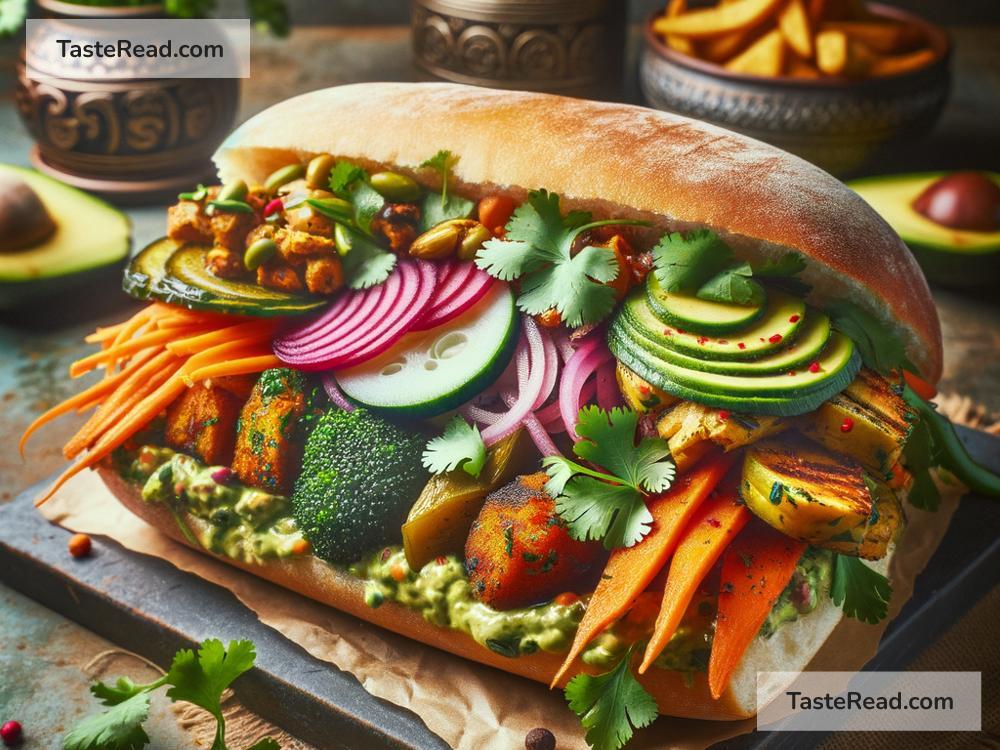The Evolution and Cultural Fusion of the Vietnamese Bánh Mì Sandwich
When you think of Vietnamese food, one dish that often comes to mind is the bánh mì sandwich. This delicious street food has captured the hearts—and taste buds—of people all over the world. But did you know that the bánh mì’s story is one of cultural fusion and centuries of evolution? Let’s dive into how this iconic sandwich came to be and why it’s so special.
What Is Bánh Mì?
Bánh mì is a type of Vietnamese sandwich that combines flavorful fillings like grilled pork, pâté, cold cuts, pickled vegetables, and fresh herbs inside a light, crispy baguette. Some versions also include scrambled eggs, fried tofu, or spicy mayonnaise. It’s a perfect balance of savory, sweet, tangy, and crunchy, making every bite a delightful culinary experience.
But the bánh mì is more than just a sandwich—it represents Vietnam’s history, resilience, and creativity.
French Roots: A Colonial Beginning
The bánh mì wouldn’t exist without the influence of French colonization. In the mid-19th century, France established control over Vietnam, introducing many Western foods and culinary techniques. One of these imported items was the baguette—a long, crusty bread made from wheat flour. While bread was a staple in French diets, it was unfamiliar to Vietnamese people, as rice had been the main carb in their cuisine for centuries.
At first, baguettes were considered a luxury item and were mostly eaten by wealthy French colonists living in Vietnam. Over time, locals began incorporating baguettes into their own meals, adapting them to suit Vietnamese tastes.
The Birth of Bánh Mì Thịt: A Fusion Sandwich
The true bánh mì as we know it today began to take shape in the early 20th century. Vietnamese cooks put their own spin on the French baguette by using fillings inspired by local ingredients and flavors. Instead of sticking to European-style meat and cheese, they added marinated pork, fresh cilantro, sliced cucumber, pickled daikon, and carrots. These additions brought a unique Vietnamese flair to the sandwich, blending Eastern and Western culinary traditions.
During this time, pâté—a French spread made with finely ground liver—also became a key ingredient. Even though pâté was not originally part of Vietnamese cuisine, it added a rich, smooth texture to bánh mì and was embraced wholeheartedly by locals.
The result was a sandwich that was both affordable and packed with flavor. It quickly gained popularity among everyday Vietnamese people, especially as street vendors began selling bánh mì for quick, on-the-go meals.
Post-War Evolution: Bánh Mì Goes Global
The bánh mì’s journey didn’t stop in Vietnam. In the mid-20th century, after the Vietnam War, many Vietnamese families immigrated to countries like the United States, Canada, Australia, and France. They brought their food traditions with them, introducing bánh mì to the wider world.
Outside Vietnam, bánh mì continued to adapt to local ingredients and preferences. For example, in the U.S., you might find bánh mì stuffed with BBQ pulled pork, avocado, or sriracha sauce. In Australia, bánh mì shops might include beetroot or fried chicken as fillings. These variations reflect the global love for bánh mì and how people from different cultures have made it their own.
At the same time, bánh mì became a symbol of identity for Vietnamese immigrants. It reminded them of home while serving as a connection point with people from other backgrounds who wanted to try Vietnamese food.
Why Is Bánh Mì So Popular?
One of the reasons bánh mì is so beloved is its versatility. It can be eaten for breakfast, lunch, dinner, or even as a snack. Meat lovers, vegetarians, and vegans can all enjoy their own versions of bánh mì, thanks to the wide range of available fillings.
The sandwich is also very affordable, which makes it appealing to people from all walks of life. Whether you’re buying bánh mì from a street cart in Vietnam or a trendy café in New York City, it’s almost always inexpensive compared to other types of sandwiches.
Plus, bánh mì is portable, so it’s perfect for busy people who need a meal on the go. Its lightweight baguette and compact size make it easy to carry—and easier to eat.
A Worldwide Icon of Cultural Fusion
The bánh mì sandwich is more than just food; it’s a symbol of cultural fusion and creativity. It brings together French bread, Vietnamese flavors, and local adaptations from every corner of the world. Each ingredient tells its own story, and together, they represent the adaptability and innovation of Vietnamese cuisine.
Every bánh mì is a reminder of how food can transcend borders and bring people together. Whether you’re eating it on the streets of Ho Chi Minh City or at a café in Paris, the bánh mì sandwich connects us to its rich history and reminds us of the beauty of sharing cultures.
Conclusion
The bánh mì sandwich has come a long way since its humble beginnings as a simple French baguette. Over the years, it has transformed into a global foodie favorite that reflects Vietnam’s ability to embrace and reinvent foreign influences. Today, bánh mì is celebrated for its incredible flavors, cultural significance, and universal appeal. It’s a shining example of how food can tell stories, overcome boundaries, and create connections.
Next time you enjoy a bánh mì sandwich, take a moment to appreciate the journey behind it. It’s not just a meal—it’s a culinary masterpiece shaped by history, culture, and the art of fusion.


